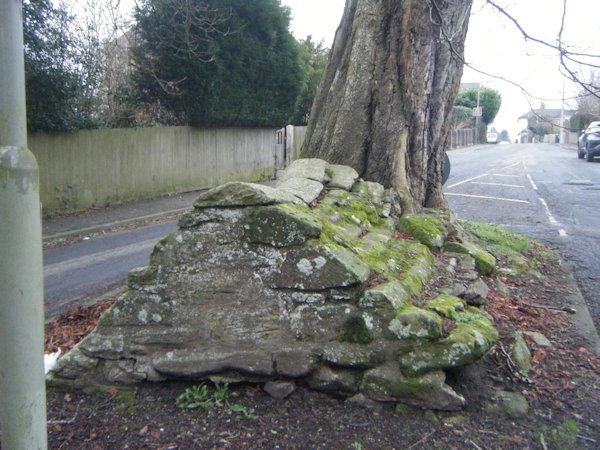 |
Dedication: Saint Julian? Location: Ludlow Coordinates: 52.371456N, -2.7087728W Grid reference: SO518750 Heritage designation: Grade II listed building and scheduled monument |
HOME - ENGLAND - SHROPSHIRE
 |
Dedication: Saint Julian? Location: Ludlow Coordinates: 52.371456N, -2.7087728W Grid reference: SO518750 Heritage designation: Grade II listed building and scheduled monument |
The exact age of Ludlow's holy well is not clear. The site certainly had links to a nearby Augustinian Friary, which owned the land on which St Julian's Well is located; as this friary was established in the 13th century, it has been suggested that the well is of that date, or slightly later. It is very probable that the well was created on the part of the friary as a commercial venture.
It is not only the age of the well that is uncertain: the identity of "St Julian" has often been debated. There are multiple different saints named Julian, although none of them have links to Ludlow, and only one of them lived in England. The only English St Julian is a 14th century saint known as Julian of Norwich. She lived as an anchoress in a small cell that adjoined St Julian's Church in Norwich, and it was there that, when she was extremely ill at the age of thirty, she had several "visions" that she believed were from God. She recorded these visions in a manuscript, which was later published as Revelations of Divine Love. If the well is dedicated to her, which is possible, if not unlikely, then the well must not predate the friary. It is, however, more probable that the site is dedicated to one of the other St Julians, most of whom died before the 12th century.
It does not appear that the particular dedication of the well mattered to the medieval inhabitants of Ludlow, who seem to have frequently visited the well in the belief that it could heal any ailments. Its healing properties do not appear to have survived the Reformation, however. The earliest reference that I could find to the well dates from 1798 and was made by John Price of Worcester in The Ludlow Guide:
|
In the eaſt part under the wall was St. Julian's Well, ſo famous in ancient times for the miraculous cures done there. The efficacy of the water might poſſibly have been wonderful in many diſorders; and as a certain degree of aſtoniſhment, oftentimes of reſpect, is frequently attached by mankind to myſteries they do not underſtand, no wonder it was greatly reſorted to; but as it has now unfortunately left of wonder-working, it ſeems to be totally neglected. |
Water from St Julian's Well was used to supply the White Conduit from at least the 15th century, which provided water to Ludlow for centuries.
According to the site's entry on the National Heritage List for England, the current structure was built in the 18th century, but, considering the comments of John Price regarding the well's condition, this seems unlikely. The well-house, most of which is submerged beneath the ground, is almost certainly much older. The list entry for the site also describes the results of a "limited investigation" that was undertaken at the well in 1994:
|
This revealed an entrance at the south western end, which had been blocked by two stone slabs. Inside, steps led down into the cistern, the sides of which were lined with ashlar. The cistern was found to contain a thick deposit of organic matter. This investigation has shown that the structure as a whole survives in good condition. |
Today, it remains uncertain as to whether the spring that the well-house is constructed over still produces water. It is only a shame that no photographs were taken of the interior of the well-house in 1994, which seems to be the last time that it was accessed. Only the roof is now visible. When I visited in January, 2025, whilst the north-west face of the roof seemed to be in decent condition, the opposite side seemed to be sagging and several of the stones appeared to be coming slightly loose.
|
Access: The well is located in the centre of a quiet residential street. |
Copyright 2025 britishholywells.co.uk